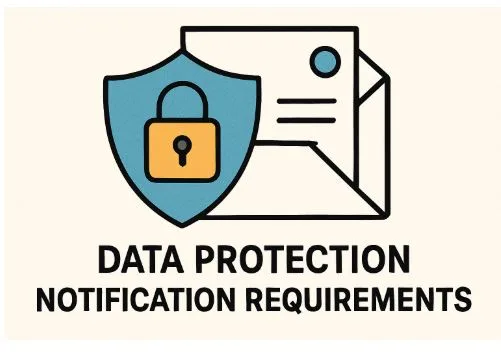Data Breach Notification Laws: What Businesses Need To Know Now
Data breaches are pervasive in the digital economy, prompting governments to enact stricter notification laws. These laws mandate how and when organizations must inform individuals and regulators about security incidents. Noncompliance carries risks of significant fines, reputational damage, and loss of customer trust. For businesses, understanding these evolving federal, state, and international regulations is crucial for risk management and consumer protection, enabling prompt responses, harm minimization, and transparency during a breach.
Why Data Breach Notification Laws Matter
In today’s digital landscape, the risks associated with cyberattacks and data breaches are at an all-time high. The widespread exposure of sensitive customer and business information can happen almost instantly, leaving organizations scrambling to respond. One key area of focus is data breach notification laws, which set forth clear expectations for how and when businesses must inform affected parties and authorities after a breach occurs.
Failing to comply with these laws can cause serious repercussions, eroding consumer trust and reputations. Customers expect transparency and quick communication when their data is at risk. Businesses must stay updated on regulations to avoid penalties and maintain credibility and loyalty. Those who do so successfully stand out as trustworthy stewards of data.
How Regulations Vary Across Regions
Data breach notification rules vary by location. In the US, timelines and criteria differ at the federal and state levels, with California’s CCPA and New York’s SHIELD Act having strict thresholds. The EU’s GDPR requires companies to notify authorities within 72 hours, a stricter rule than many U.S. laws. Multinational businesses must navigate these differences carefully, especially with cross-border data incidents, as regulatory overlaps add complexity.
Recent Changes In Data Breach Notification Laws
Over the past year, legislative updates have set tougher deadlines and broadened data breach definitions. Regulatory bodies demand faster action and transparency. The SEC now requires some companies to disclose cybersecurity incidents within four days, a notable shift. This responds to rising threats and public calls for accountability. In late 2023, the U.S. government reinforced breach reporting rules for critical infrastructure, emphasizing the importance of timely, public disclosures. Regulations keep evolving with broader “personal data” definitions and stricter incident response standards.
Common Challenges For Businesses When Reporting Breaches
Businesses face the challenge of quickly identifying affected individuals after a breach. Determining the incident’s scope often needs extensive investigation, straining resources and delaying notification. Coordinating with legal, compliance, and communications teams across jurisdictions adds complexity, especially for large or multinational organizations. Effective breach response requires seamless collaboration among IT, legal, and HR to assess impact, contain threats, and craft compliant messages. Businesses must stay vigilant and adaptable to regulatory changes and unexpected issues.
Steps To Take After a Data Breach
Time is crucial after discovering a data breach. The first step is implementing the incident response plan: secure affected systems, stop data loss, and preserve evidence. Notify leadership and assemble the response team, including legal counsel and IT security, to handle each aspect. Clear, coordinated communication is essential. Inform internal stakeholders to support customers and meet regulatory obligations. External notifications should detail the breach, data involved, and recommended actions. Providing transparent, timely updates fulfills legal needs and shows a commitment to stakeholder protection.
Proactive Strategies To Stay Compliant
Proactive planning guards against regulatory issues. Employee training promotes security awareness, helping staff identify and report risks early. Regular cybersecurity audits find vulnerabilities for fixing. Using resources offers current legislative guides and best practices for various industries. Staying connected to these organizations and applying their advice enhances compliance.
The Future of Data Breach Notification Directives
The data breach notification landscape is evolving with stricter rules, broader breach definitions, and shorter timelines, driven by growing cyber threats. Policymakers aim for more cross-border cooperation, leading to potential global standards. Businesses must adapt by keeping flexible policies and ongoing training. Investing in prevention, detection, and transparent reporting is vital for trust in a digital world.




